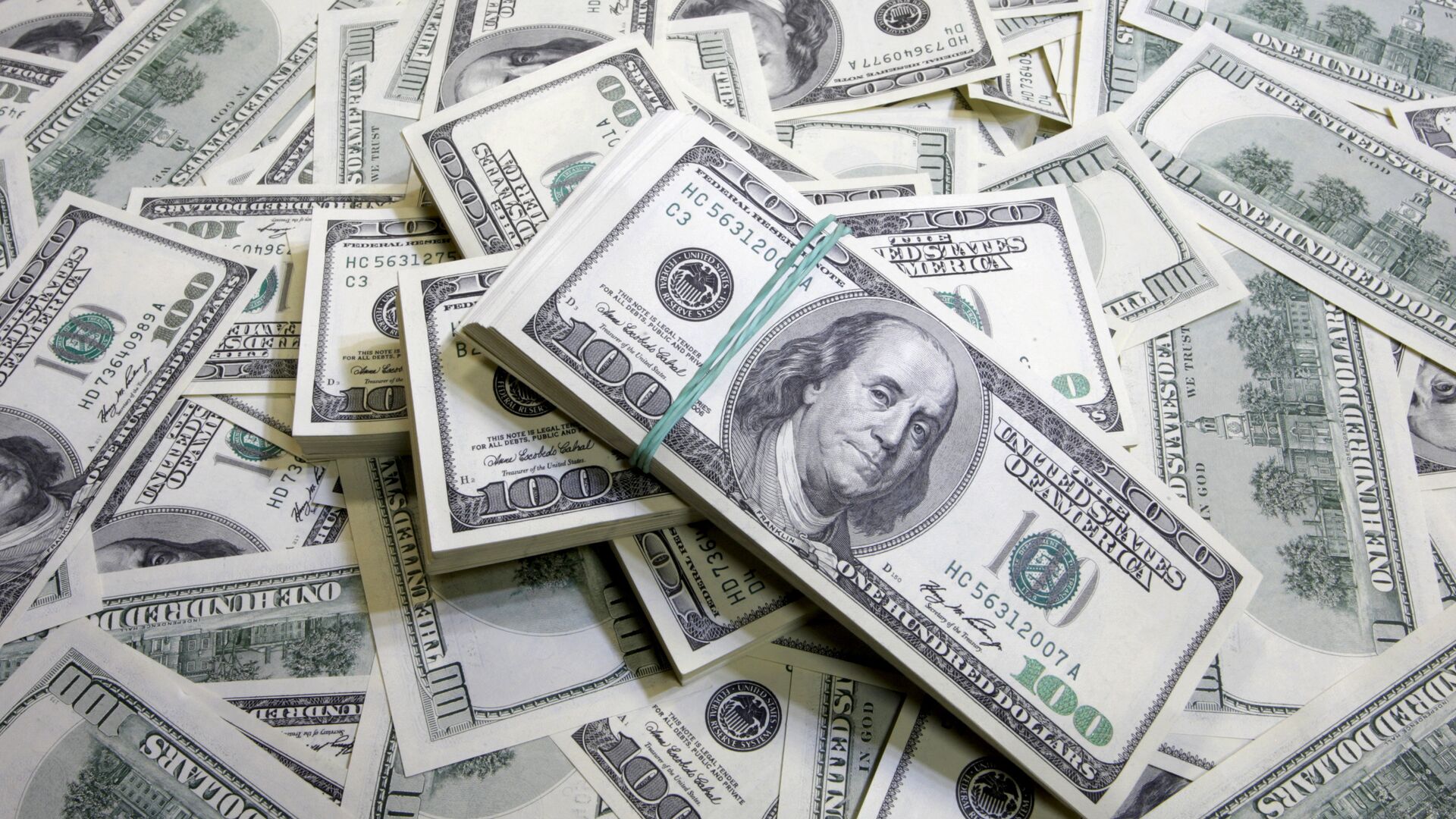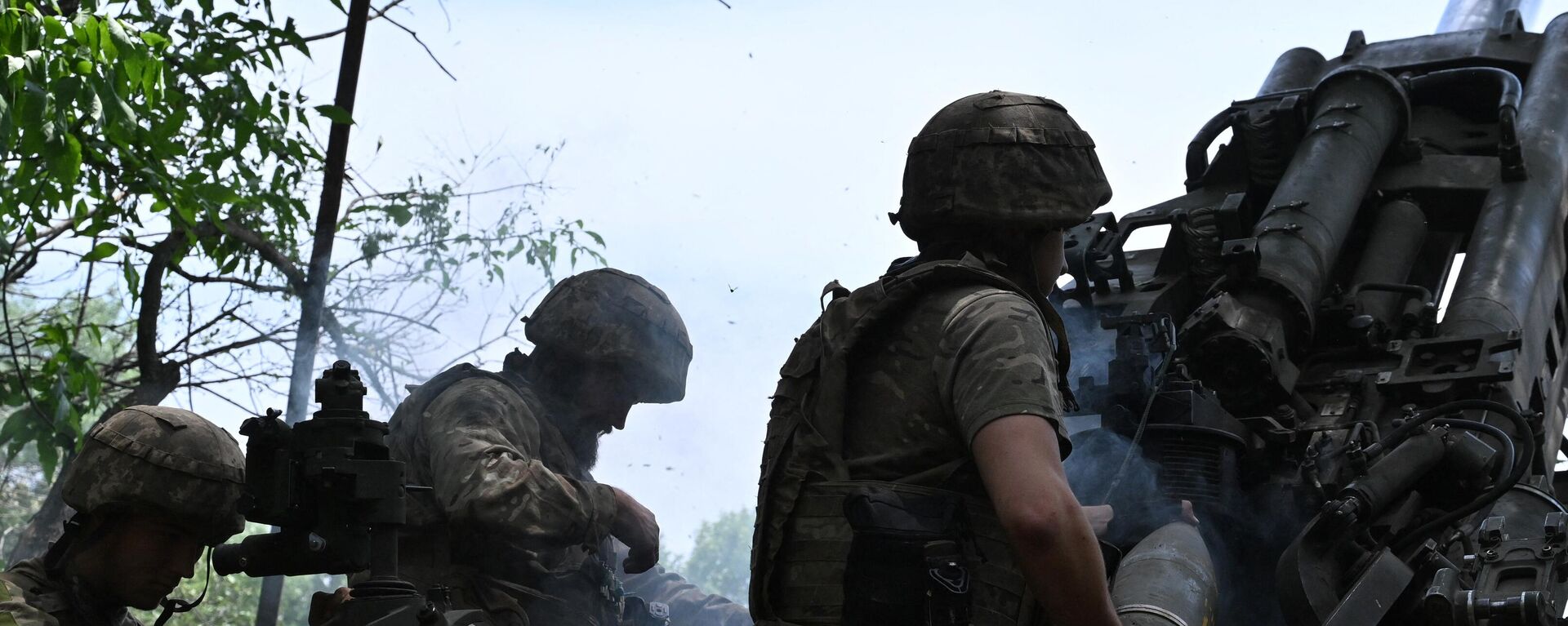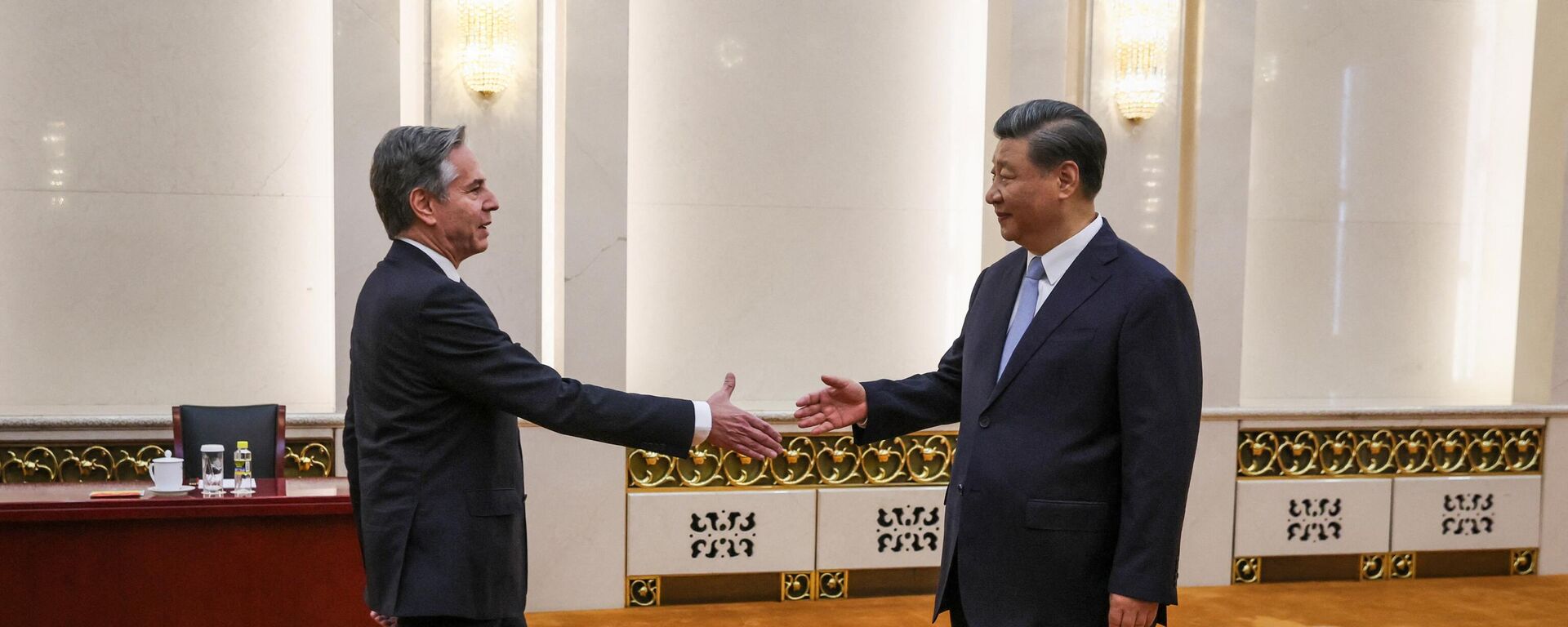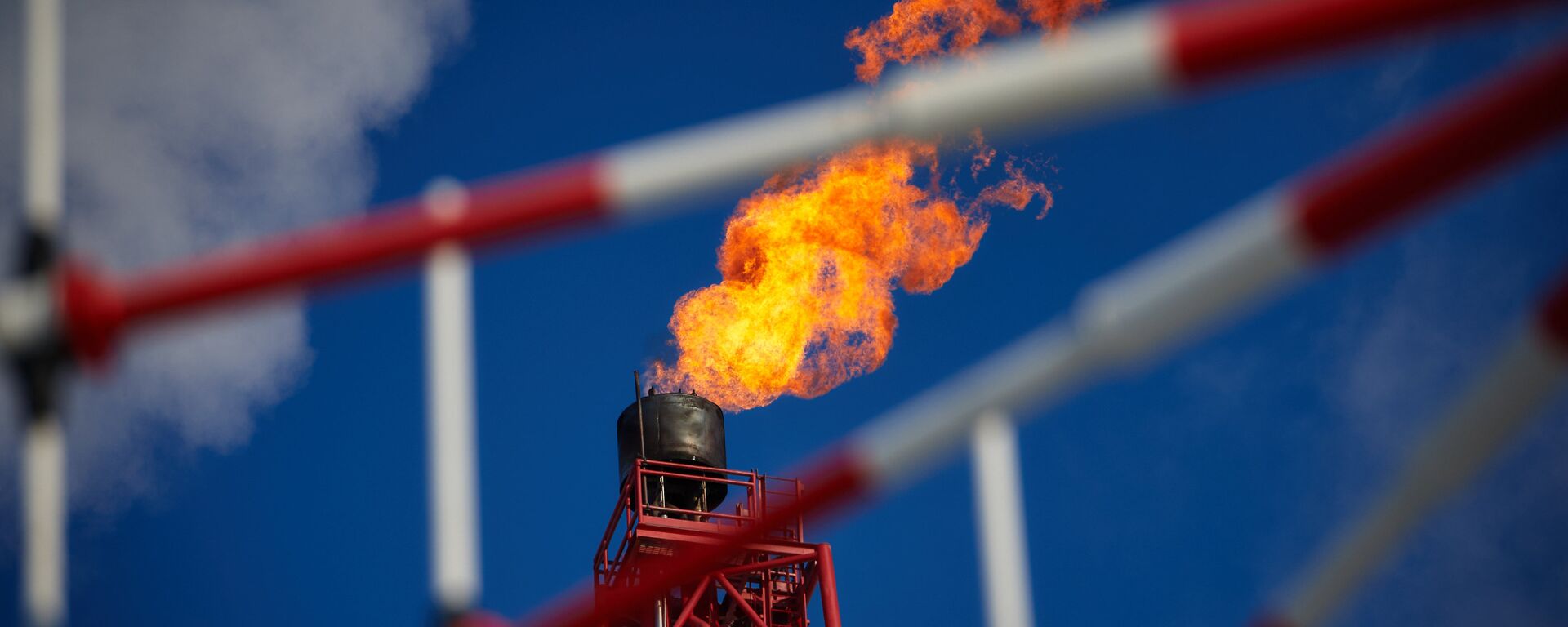https://sputnikglobe.com/20230702/who-are-natos-biggest-spenders-and-how-much-bang-do-they-get-for-their-bucks-1111627337.html
Who Are NATO's Biggest Spenders and How Much Bang Do They Get for Their Buck?
Who Are NATO's Biggest Spenders and How Much Bang Do They Get for Their Buck?
Sputnik International
The Western alliance’s defense expenditures top those of all of their major adversaries, and the world, combined. Which members of the bloc spend the most? And does higher spending make NATO more efficient? Sputnik explores
2023-07-02T17:08+0000
2023-07-02T17:08+0000
2023-07-02T18:43+0000
military
emmanuel macron
jens stoltenberg
joe biden
russia
ukraine
afghanistan
nato
north atlantic treaty organization
spending
https://cdn1.img.sputnikglobe.com/img/104768/46/1047684611_0:160:3073:1888_1920x0_80_0_0_15c7ba2e41cc3b2eb6ca25300f2bcb2e.jpg
The North Atlantic Treaty Organization received a major morale boost and cash infusion after provoking Russia into a proxy war in Ukraine, with French President Emmanuel Macron suggesting recently that Moscow had helped revive the "brain-dead" alliance, and US President Joe Biden boasting that while Russia had hoped for “the Finlandization of NATO, [it] got the NATOization of Finland – and Sweden" instead.The alliance is spending over $1.3 trillion on defense in 2023, up from $1.2 trillion in 2022.The uptick in the bloc’s expenditures goes back long before the escalation in Ukraine in 2022, with the alliance tasking all members with spending two percent or more of their GDP on defense at its 2014 summit in Wales following the Euromaidan coup in Kiev and the outbreak of hostilities in Donbass.NATO consistently spends many times more on the military than its top adversaries.For example, Russia, which is fighting in a proxy conflict against the entire Western bloc as the latter pumps Kiev up with tens of billions of dollars in weapons, has laid out about five trillion rubles, or $56.6 billion US, for defense in 2023. China, which surpassed the US economy in GDP by purchasing power in 2020, and faces regular provocations from Washington in the South China Sea and Taiwan, is spending 1.55 trillion yuan (about $224 billion) on defense in the current year.Who is NATO’s Biggest Spender?As you may have guessed, the United States has by far the biggest military spending footprint in the Western alliance, dedicating $877 billion, about three percent or GDP or 12 percent of all US federal spending, to defense.US defense spending has increased every year since 2015 following a five-year post-Iraq and US economic crisis-related dip, with spending trending upward for decades after the 1948 low of $9 billion (about $153.7 billion adjusted for inflation).Congress recently reached a landmark debt limit deal which caps defense spending at $886 billion for fiscal year 2024. But lawmakers from both parties have already begun brainstorming workarounds to spend more, such as using "emergency supplementals" for Ukraine for other Pentagon priorities. A recent independent audit of the money the US has spent in Ukraine over the past year conducted by the Grayzone confirmed the ease with which "money for Ukraine" can be diverted for other things, such as cash for foreign think tanks, media, and even private equity firms.Efforts by a small handful of conservative Republicans such as Matt Gaetz, Marjorie Taylor Green, Paul Gosar, and Rand Paul to rein in defense spending have put the lawmakers on a collision course with hawks in their own party. Last week, Senator Lindsey Graham accused the MAGA wing of the GOP of "sinking" the US Navy by cutting funds to build new ships, and complained that there was "not a penny in [the budget] deal" to keep the Ukraine proxy war going.Who are the Top Three?Second after the US in terms of total spending is the UK, which laid out the equivalent of $68.5 billion for defense in 2023, and has pledged to increase spending another $6 billion over the next two years, even as the country balances on the brink of a recession, and faces a cost of living crisis unprecedented since the 1970s.Germany is NATO's third-biggest spender, committing about $54.5 billion to defense in 2023, and planning a hike of up to $10.9 billion (to €60 billion total) in 2024. Germany, which is already in a recession, has suffered arguably the greatest losses among European countries as a consequence of the NATO-Russia standoff, losing a source of cheap Russian energy and resources to fuel its hungry industrial economy, and facing a terrorist attack against the Nord Stream pipelines by its own allies.And the Top 10?Next are France, Italy, Poland, Canada, the Netherlands, Turkiye, and Spain, which spent the equivalent of $42.8 billion, $30.3 billion, $22.5 billion, $21.4 billion, $18.1 billion, $15.9 billion, and $13.1 billion on defense this year, respectively. Virtually all of these nations have pledged further hikes, citing foreign threats, as well as commitments to NATO.France, which has faced months of protests related to government plans to raise the pension age, and which is now in flames after the police shooting of a teen outside Paris, has far and away the most ambitious defense spending plans, with President Macron sending a $438 billion military budget plan to parliament this spring for the years 2024-2030.More Expensive = Better?These words, written over 37 years ago for the hit BBC television series Yes, Prime Minister, remain as relevant as ever when it comes to Western countries' perceptions of defense, where money seems to equal better capabilities."When it comes to these figures and numbers, we are an effective alliance and we have effective armies, but the cost level is much higher, reflecting just a higher standard of living," NATO chief Jens Stoltenberg said in 2019 while trying to explain why the bloc was continuing to raise defense spending even after outlays had reached over 20 times Russia’s.Other observers have different explanations, including an overabundance of well-compensated senior officers like generals and admirals, exceedingly generous outlays for procurement and supply (like the famous $20.2 billion per year price tag on air conditioning during US operations in Iraq and Afghanistan), and mindboggling sums spent on prestige projects, like the Lockheed Martin F-35 fighter jet, which has a projected lifetime cost of over $1.7 trillion, and counting. The same can be said of the US’ half-a-dozen or so multi-billion-dollar hypersonic missile projects, which have yet to enter service, even as Russia, China, and Iran have all successfully unveiled similar weapons.What Does NATO Get for Its Money?The alliance has demonstrated that it can use its air power to pound smaller, militarily weaker countries into submission – case in point Yugoslavia in 1999 or Muammar Gaddafi's Libya in 2011. Yet when it comes to putting boots on the ground and keeping them there, the alliance has had far less success, with the $2+ trillion the US and its allies spent in Afghanistan between 2001 and 2021 failing to prevent the country’s government and NATO-trained army from collapsing in mere months after the US announced its withdrawal.But perhaps that’s the point, as now-imprisoned WikiLeaks founder Julian Assange said back in 2011.
https://sputnikglobe.com/20230629/ukraines-counteroffensive-struggling-against-russias-defences-top-nato-general-says-1111541246.html
https://sputnikglobe.com/20230621/pressure-on-us-dollar-debt-likely-drove-blinken-effort-to-mend-ties-with-china-1111349196.html
https://sputnikglobe.com/20230613/german-industry-gravely-threatened-by-loss-of-russian-gas-pipeline-lifeline-1111120205.html
https://sputnikglobe.com/20230607/power-has-shifted-dramatically-nato-expansion-plans-in-asia-bump-against-reality-1110988084.html
russia
ukraine
afghanistan
Sputnik International
feedback@sputniknews.com
+74956456601
MIA „Rossiya Segodnya“
2023
News
en_EN
Sputnik International
feedback@sputniknews.com
+74956456601
MIA „Rossiya Segodnya“
Sputnik International
feedback@sputniknews.com
+74956456601
MIA „Rossiya Segodnya“
defense spending, defense, military spending, spending, united states, united kingdom, us, uk, france, germany, spain, turkiye, nato, alliance, bloc, north atlantic treaty organization
defense spending, defense, military spending, spending, united states, united kingdom, us, uk, france, germany, spain, turkiye, nato, alliance, bloc, north atlantic treaty organization
Who Are NATO's Biggest Spenders and How Much Bang Do They Get for Their Buck?
17:08 GMT 02.07.2023 (Updated: 18:43 GMT 02.07.2023) The Western alliance's defense expenditures top those of all of their major adversaries, and the world, combined. Which members of the bloc spend the most? And does higher spending actually make NATO’s armies more efficient? Sputnik breaks things down.
The North Atlantic Treaty Organization received a major morale boost and cash infusion after
provoking Russia into a proxy war in Ukraine, with French President Emmanuel Macron suggesting recently that Moscow had helped revive the
"brain-dead" alliance, and US President Joe Biden
boasting that while Russia had hoped for “the Finlandization of NATO, [it] got the NATOization of Finland – and Sweden" instead.
The alliance is spending over $1.3 trillion on defense in 2023, up from $1.2 trillion in 2022.
The uptick in the bloc’s expenditures goes back long before the escalation in Ukraine in 2022, with the alliance tasking all members with spending two percent or more of their GDP on defense at its 2014 summit in Wales following the Euromaidan coup in Kiev and the outbreak of hostilities in Donbass.
NATO consistently spends many times more on the military than its top adversaries.
For example, Russia, which is fighting in a proxy conflict against the entire Western bloc as the latter pumps Kiev up with tens of billions of dollars in weapons, has laid out about
five trillion rubles, or $56.6 billion US, for defense in 2023. China, which
surpassed the US economy in GDP by purchasing power in 2020, and faces regular provocations from Washington in the South China Sea and Taiwan, is spending 1.55 trillion yuan (
about $224 billion) on defense in the current year.
Who is NATO’s Biggest Spender?
As you may have guessed, the United States has by far the biggest military spending footprint in the Western alliance, dedicating $877 billion, about three percent or GDP or 12 percent of all US federal spending, to defense.
US defense spending has
increased every year since 2015 following a five-year post-Iraq and US economic crisis-related dip, with spending trending upward for decades after the 1948 low of
$9 billion (about $153.7 billion adjusted for inflation).
Congress recently reached a landmark debt limit deal which caps defense spending at $886 billion for fiscal year 2024. But lawmakers from both parties have already
begun brainstorming workarounds to spend more, such as using "emergency supplementals" for Ukraine for other Pentagon priorities. A recent
independent audit of the money the US has spent in Ukraine over the past year conducted by the Grayzone confirmed the ease with which "money for Ukraine" can be diverted for other things, such as cash for foreign think tanks, media, and even private equity firms.
Efforts by a small handful of conservative Republicans such as Matt Gaetz, Marjorie Taylor Green, Paul Gosar, and Rand Paul to rein in defense spending have put the lawmakers on a collision course with hawks in their own party. Last week, Senator
Lindsey Graham accused the MAGA wing of the GOP of "sinking" the US Navy by cutting funds to build new ships, and complained that there was "not a penny in [the budget] deal" to keep the Ukraine proxy war going.
Second after the US in terms of total spending is the
UK, which laid out the equivalent of $68.5 billion for defense in 2023, and has pledged to increase spending another $6 billion over the next two years, even as the country balances on the brink of a recession, and faces a
cost of living crisis unprecedented since the 1970s.
Germany is NATO's third-biggest spender, committing about $54.5 billion to defense in 2023, and planning a hike of up to $10.9 billion (to €60 billion total) in 2024. Germany, which is
already in a recession, has suffered arguably the greatest losses among European countries as a consequence of the NATO-Russia standoff, losing a source of cheap Russian energy and resources to fuel its hungry industrial economy, and facing a terrorist attack against the Nord Stream pipelines by its own allies.
Next are France, Italy, Poland, Canada, the Netherlands, Turkiye, and Spain, which spent the equivalent of $42.8 billion, $30.3 billion, $22.5 billion, $21.4 billion, $18.1 billion, $15.9 billion, and $13.1 billion on defense this year, respectively. Virtually all of these nations have pledged further hikes, citing foreign threats, as well as commitments to NATO.
France, which has faced months of protests related to government plans to raise the pension age, and which is now
in flames after the police shooting of a teen outside Paris, has far and away the most ambitious defense spending plans, with President Macron sending a $438 billion military budget plan to parliament this spring for the years 2024-2030.
Sir Humphrey Appleby: "If you walked into a nuclear missile showroom you would buy Trident. It’s lovely, it’s elegant, it’s beautiful. It is quite simply the best. And Britain should have the best. In the world of the nuclear missile it is the Saville Row suit, the Rolls Royce Corniche, the Chateau Lafitte 1945. It is the nuclear missile Harrods would sell you. What more can I say?"
Jim Hacker: "Only that it costs 15 billion pounds and we don't need it."
Sir Humphrey Appleby: "Well you can say that about anything at Harrods!"
These words, written over 37 years ago for the hit BBC television series Yes, Prime Minister, remain as relevant as ever when it comes to Western countries' perceptions of defense, where money seems to equal better capabilities.
"When it comes to these figures and numbers, we are an effective alliance and we have effective armies, but the cost level is much higher, reflecting just a higher standard of living," NATO chief Jens Stoltenberg
said in 2019 while trying to explain why the bloc was continuing to raise defense spending even after outlays had reached over 20 times Russia’s.
"If you compare salaries and costs across NATO allies and Russia, of course [NATO’s] cost levels are higher. And therefore, when you compare these budgets at market prices, and common currencies, then you get those conclusions you are referring to, but that doesn't reflect less efficiency," Stoltenberg assured.
Other observers have different explanations, including an
overabundance of well-compensated senior officers like generals and admirals, exceedingly generous outlays for procurement and supply (like the famous
$20.2 billion per year price tag on air conditioning during US operations in Iraq and Afghanistan), and mindboggling sums spent on prestige projects, like the Lockheed Martin F-35 fighter jet, which has a projected lifetime cost of over
$1.7 trillion, and counting. The same can be said of the US’ half-a-dozen or so multi-billion-dollar hypersonic missile projects, which have yet to enter service, even as Russia, China, and Iran have all successfully unveiled similar weapons.
What Does NATO Get for Its Money?
The alliance has demonstrated that it can use its air power to pound smaller, militarily weaker countries into submission – case in point
Yugoslavia in 1999 or Muammar Gaddafi's
Libya in 2011. Yet when it comes to putting boots on the ground and keeping them there, the alliance has had far less success, with the $2+ trillion the US and its allies spent in Afghanistan between 2001 and 2021 failing to prevent the country’s government and NATO-trained army from collapsing in mere months after the US announced its withdrawal.
But perhaps that’s the point, as now-imprisoned WikiLeaks founder Julian Assange said back in 2011.
"Because the goal is not to completely subjugate Afghanistan. The goal is to use Afghanistan to wash money out of the tax bases of the United States, out of the tax bases of European countries through Afghanistan and back into the hands of the transnational security elite. That is the goal. I.e. the goal is to have an endless war, not a successful war."
Julian Assange
Imprisoned WikiLeaks founder







